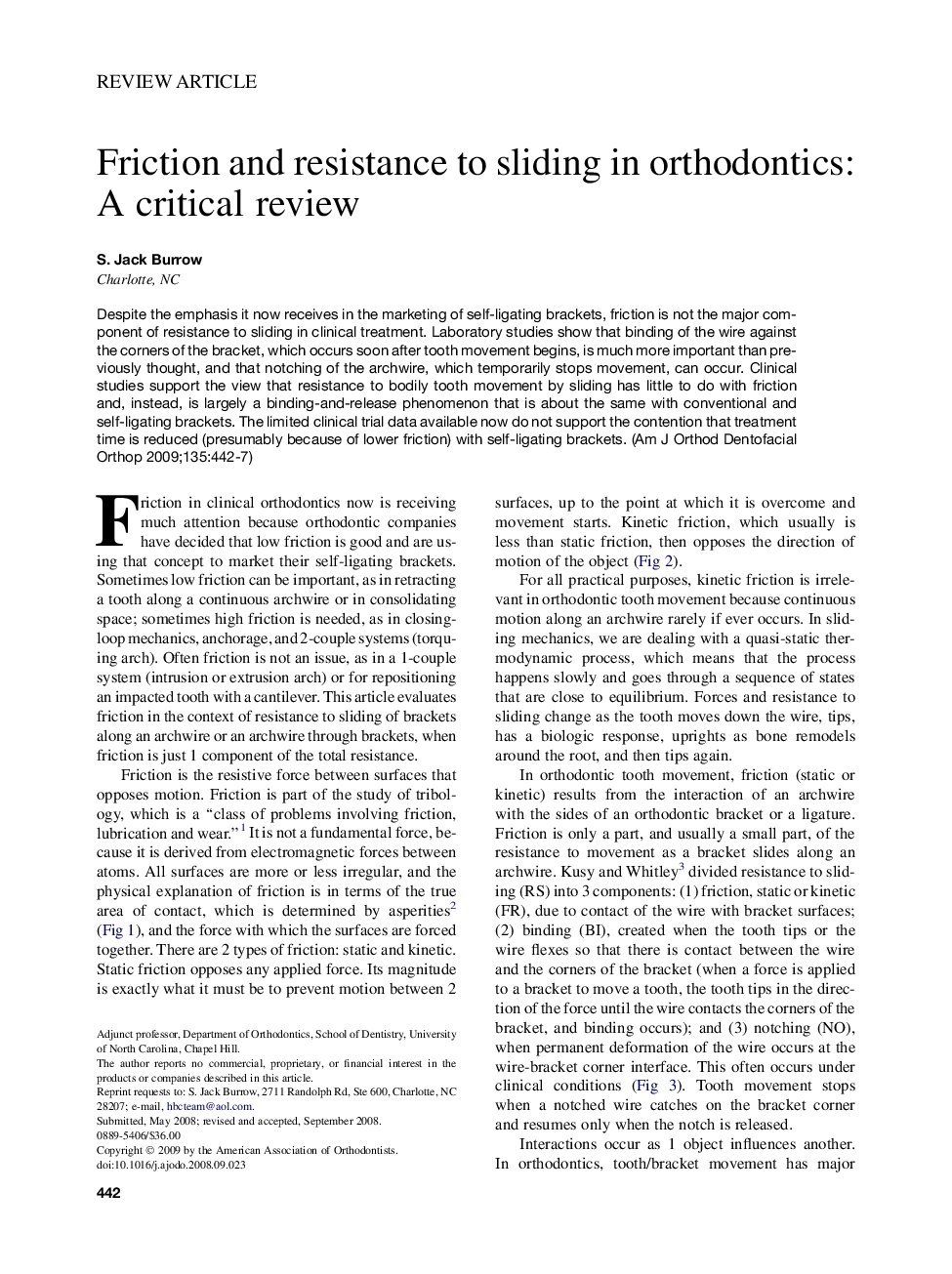| Article ID | Journal | Published Year | Pages | File Type |
|---|---|---|---|---|
| 3119924 | American Journal of Orthodontics and Dentofacial Orthopedics | 2009 | 6 Pages |
Despite the emphasis it now receives in the marketing of self-ligating brackets, friction is not the major component of resistance to sliding in clinical treatment. Laboratory studies show that binding of the wire against the corners of the bracket, which occurs soon after tooth movement begins, is much more important than previously thought, and that notching of the archwire, which temporarily stops movement, can occur. Clinical studies support the view that resistance to bodily tooth movement by sliding has little to do with friction and, instead, is largely a binding-and-release phenomenon that is about the same with conventional and self-ligating brackets. The limited clinical trial data available now do not support the contention that treatment time is reduced (presumably because of lower friction) with self-ligating brackets.
